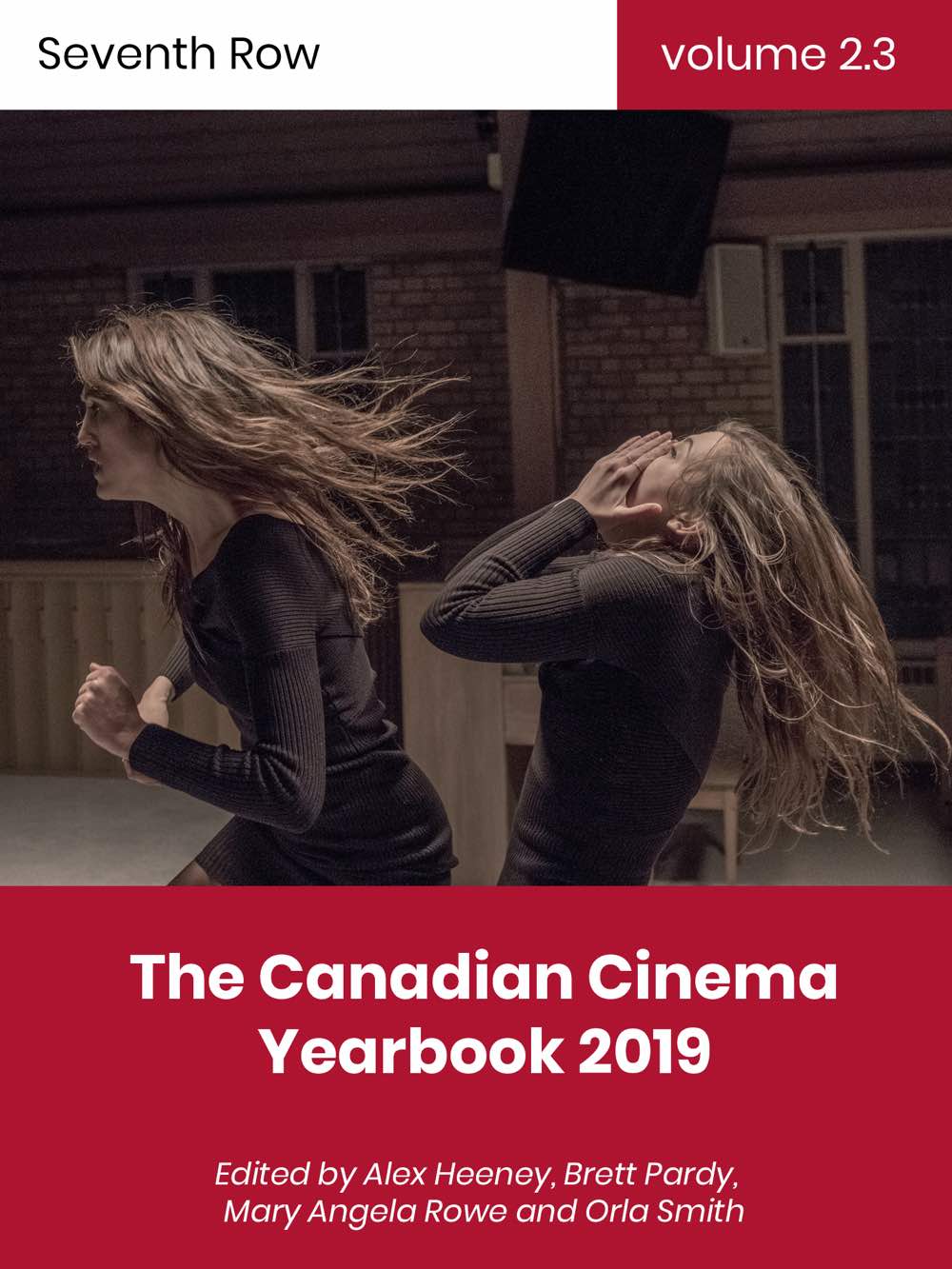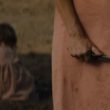Photographer Matthieu Rytz turned to documentary filmmaking to tell the story of an island that will soon be eradicated by rising sea levels with Anote’s Ark.
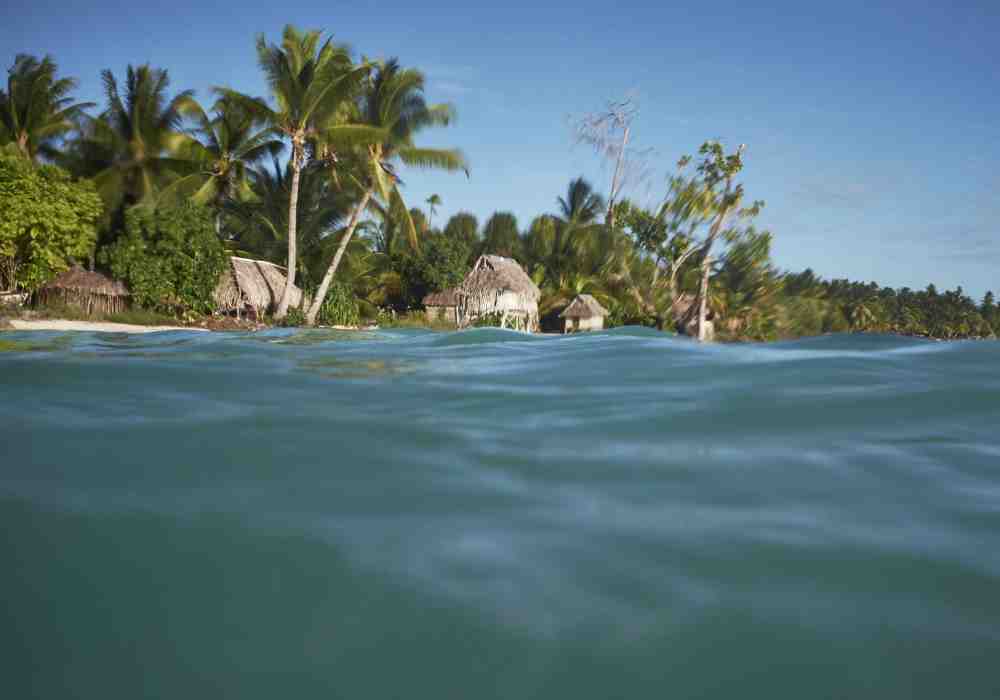
What if your country were literally going to be swallowed by the sea? It’s the central question of Canadian filmmaker Matthieu Rytz’s excellent documentary, Anote’s Ark, about how climate change is set to completely flood the Pacific Island of Kiribati. It’s a totally flat country of 100,000 that’s surrounded by ocean, meaning there’s no such thing as a place inland to move.
Climate change and the subsequent rising sea levels are the culprit, but the film focuses on the devastating effect it is having and will have on the Kiribati citizens rather than the science behind why it’s happening. Shot over four years, from 2013 to 2017, the film follows former Kiribati president Anote Tong on his world tour — with stops at the UN and multiple climate change conferences — to educate foreigners about the situation in Kiribati and to encourage climate change adaptation funding. It’s real. It’s happening. And we have to stop what we can, even though we’ve already committed to significant damage that’s irreversible.
The film also follows a Kiribati woman, Sermary Tiare, who decides to immigrate to New Zealand in search of security. The Western world offers opportunities and financial stability, but it comes at the expense of Sermary’s home, her culture, and her sense of belonging. In the predominantly white former British colony, she’ll always be an outsider from away. Her story is likely to become increasingly common.
Anote’s Ark lets us see and feel firsthand what life is like in gorgeous Kiribati. Rytz’s camera gets in close to his characters, letting us get to know them intimately, while President Tong’s voiceover introduces us to the internal conflicts he faces as a citizen and leader of Kiribati. The film is meant to galvanize action on climate change, but there’s nothing preachy about it. It hits you right in the heart.
After the film’s Canadian premiere at HotDocs, I sat down with Rytz to discuss how he got involved with making the film and how he approached embedding himself, and us, into the story of life in Kiribati. The film will air in the fall on CBC Docs in Canada, has secured European distribution, and is currently fielding offers from American distributors.
Seventh Row (7R): How did you decide to make Anote’s Ark?
Matthieu Rytz: I’ve been working as a photographer for most of my life, but this is my first feature. I was covering the global issue of the rising sea. I started with Panama, the Kuna Yala. It’s 350 islands spread out between Canada and Colombia. After doing that for two years on assignment for The New York Times, I decided to dig more into the story to see where else on the planet are people who are in danger of losing their entire country. We speak a lot of climate change, but the specific situation with Kiribati is they’re going to lose their entire country. They are going to be stateless. It’s the ultimate threat to the country.
Most of the coastal area in the world is going to be damaged by the rising sea, but they can still move inland. There will be huge economic consequences, but they won’t lose the land totally. I started to be fascinated by the story. I opened the map of the Pacific, and I realized that there are all those countries there. I’ve been traveling most of my life. When I realized there was a country as wide, in terms of border, as the United States, in the Pacific, I decided I had to go there.
I went there as a photographer covering the story. The day before I left, I met President Tong. And I discovered such an incredible man and such an incredible journey he had in front of him as the head of state knowing that, within this century, he won’t have a country. So I started making this feature.
To read the rest of the article, purchase a copy of The 2019 Canadian Cinema Yearbook here.
[wcm_restrict]
7R: The film has really striking photography, which drops us into the world of the island and allows us to understand what’s going on. How did you think about introducing us to that world?
Matthieu Rytz: As a photographer, it’s always been a concern to have beautiful cinematography. I use a very specific photographic technique. It’s only one fixed lens. As a photographer, I’ve almost always been using a 35mm lens, and for movies it’s a 28mm. Almost all the shots I made with this one lens.
If you use a zoom lens, you’re not that close to the action. If photographs aren’t good enough, it’s because they’re not close enough. I apply this rule in the movie. Only using a 28mm lens forced me to be always close physically to the action. People really get that in the movie. That’s a comment I get a lot: “Oh, I feel so close to what’s happening, so immersed in the story.” That’s also using my photographic eye for how to frame things and use images.
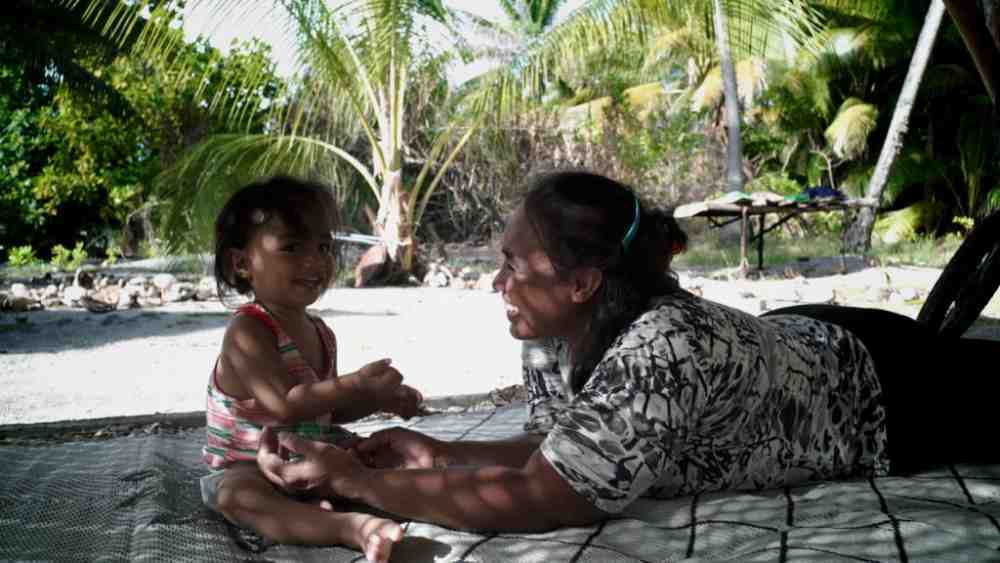
7R: There are some aerial shots of the island Kiribati.
Matthieu Rytz: I find that drones are overused now in documentaries. I tend to dislike them because they are overused. When the first DSLR had the capacity to make full HD movies, everyone started using deeper field, like at 1.8, to have this cinematographic look. It’s beautiful, but it’s over-used, and it’s not always clear what they bring to the story. I had to struggle within myself because I did not want to use too many drone shots.
[click_to_tweet tweet=”‘Only using 28mm lens forced me to be always close physically to the action.'” quote=”‘Only using 28mm lens forced me to be always close physically to the action.'”]
But in the case of Kiribati, I had no choice. There’s no perspective as a country. It’s totally flat. I cannot go up in the hills or somewhere to have perspective. You’re always right at the sea level. It became very important in the movie, actually. I do love them. It really shows the fragility and the geology of the island.
I like the shots on the water a lot, because you feel more immersed. I tried to treat the island as a character. For me, there are three characters in this movie: President Tong, Semary, and the island of Kiribati.
Interested in interviews with doc filmmakers? Pick up our Documentary Masters eBook now, and read what some of the best in the business have to say about their craft.
7R: How did you find making a film different from working as a still photographer?
Matthieu Rytz: When I met the character [President Tong], I knew that photography was very narrow to tell the story and follow the character. What could I have done? Some nice portraits and some recordings of audio? But it becomes super limited.
So I decided to make a movie, not because I wanted to make a movie, but because of the story itself. It was strong enough to make it. So I decided to jump on this journey. But I never learned cinema. I’d never been to school for that. It’s really character-driven. The character dictated the film.
7R: What was your relationship like with President Tong?
Matthieu Rytz: I get super close to the delegation and the president himself because I’ve been working with him for the last four years. At one point, I became part of the delegation. I was totally embedded in what he was doing in his daily life.
We’re not really working together. He’s been doing his campaigning, and I’ve been doing my best to get that message right.
Where it became a collaboration is, now that the movie is out, he can use it to push the message he’s been saying for the past two decades.
7R: The film also follows the story of a Kiribati woman, Sermary Tiare, who decides to leave Kiribati and move to New Zealand. How did you think about integrating her story into the film?
Matthieu Rytz: From the beginning, it was important to me to have a grassroots story. If I had just followed the president, I thought he was living in another world. As the head of state, I thought he didn’t have the same life as his people. I didn’t want to be in a situation where he doesn’t really know what it’s like there because he’s traveling and staying in expensive hotels. But that was not knowing him! So I really wanted to have a character that tells the story from another perspective.
But then, going back and forth to Kiribati, I realized that his own life, as a man in this country, is very similar to the other people in this country. It’s very simple. He’s a fisherman. He goes fishing. He doesn’t have this luxury. I just went back to his home for Christmas. It’s a very, very simple home. No hot water. It feels like a poor neighbourhood of Bogota, nothing fancy.
[click_to_tweet tweet=”‘It was important to me to have a grassroots story. If I had just followed the president, I thought he was living in another world.'” quote=”‘It was important to me to have a grassroots story. If I had just followed the president, I thought he was living in another world.'”]
7R: You were working on this film for four years. How did you figure out how to tell the story you wanted to tell?
Matthieu Rytz: It took a year of editing. We had many, many stories. We put so many cards on a blackboard. It was a challenge, of course, bringing 400 hours of footage to a one-hour movie. It was a very long process. It’s the basics of documentary storytelling, but it’s challenging. I had so many possibilities for how to tell the story, yet it’s a simple story. I found it challenging to make it simple while preserving the complexity of it.
7R: What were the key concepts you wanted to highlight?
Matthieu Rytz: I had a few very important concepts: campaigning with dignity, climate change as a moral issue, bringing the technology. Then, I did a big master interview with him at the end. I met with him again, and we had two days with eight hours of interviews: four hours and four hours.
But I knew him. The problem with Anote Tong is that, as the head of state, he gets used to saying the same thing all of the time in front of the media. So whenever I asked a question, it triggers the same thing. I was like, “Yeah, I’ve heard that many times. You told that at the UN General Assembly. ” At one point, I knew him so well, that I could just say, “No, no, go deeper.”
All the voice-over, it took me four years to get it, to crack the interview, to just go into his mind and make him say things that I know he has inside of him while we’re just having beer.
[click_to_tweet tweet=”‘It took me four years to get it, to crack the interview, to just go into his mind and make him say things that I know he has inside of him.'” quote=”‘It took me four years to get it, to crack the interview, to just go into his mind and make him say things that I know he has inside of him.'”]
The problem I had with Anote was the moment I turned on the camera, he turned into the head of state. So how do you crack the head of state? He’s so aware of his image. The others are very easy. But the head of state has controlled his image all this time. So I’m like, “No, stop! Stop doing it! Just be the Anote I know!”
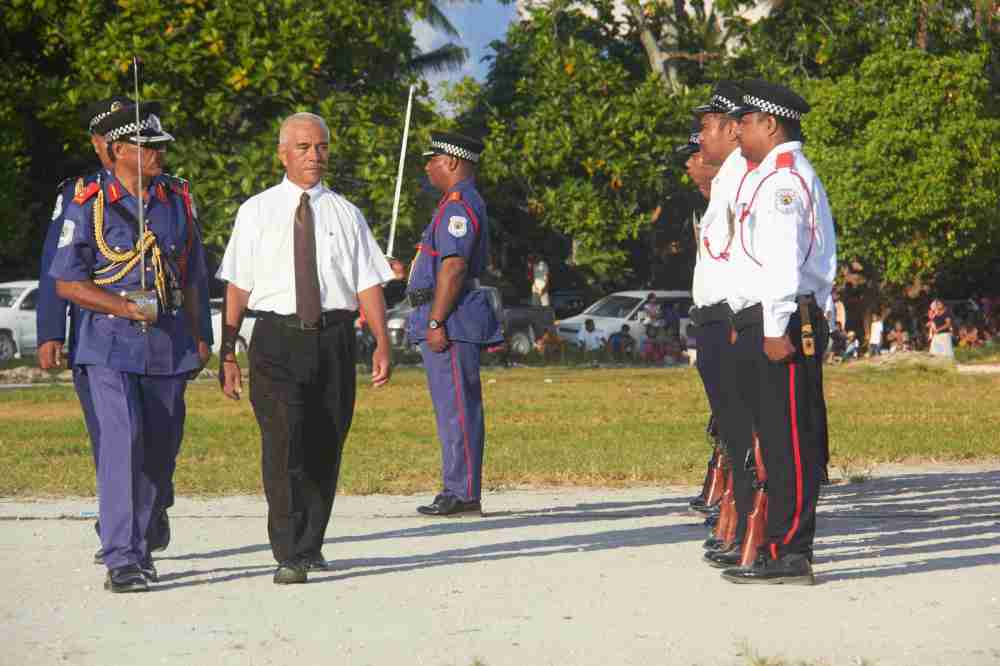
7R: What were you talking about in that interview?
Matthieu Rytz: What you get from the voice-over is more sensitive. There’s more intimacy in the way he speaks. He says the same thing but in a different way. As you get more intimate with the voice-over, you feel it when you listen to the voice. It’s like a conversation, not a formal interview with a journalist asking questions.
Throughout the film, you have this voice of an old man. He’s the head of state, but he’s also like a grandfather. If I’d just had the head of state, it would have been interesting but dry. It took four years to go into his mind, his head, and at one point, I crack him. We sit, and we did it.
7R: With a film like Anote’s Ark, there’s always the danger of preaching to get a message through. But you never fall into the trap. How did you approach that balancing act?
Matthieu Rytz: It’s by going to the emotion. I think the movie doesn’t speak much to the head. There is no rational argument about climate change. From minute one, you start watching the film, and you get it emotionally. I think that’s the best way to get a message. If you can touch people’s hearts, then your message is getting through. If you just go to the intellect, people will find it interesting, but that’s not enough.
[click_to_tweet tweet=”‘There is no rational argument about climate change.'” quote=”‘There is no rational argument about climate change.'”]
There are many movies about climate change as an issue, too. Most of them are specialist scientists talking about the issue. When you hear Al Gore talking about it, it’s very interesting. But it’s going to be the least interesting. It’s from the one person on this planet who has the resources to go wherever he has to go to save himself and his family from the effects of climate change. In the daily life, it has no impact on him. It’s important and interesting, but it’s not as truthful as seeing Anote Tong.
Anote’s Ark is as good as it is because of how grounded it is in personal stories and how they’re tied to the land. A similar approach can be found in Michelle Latimer’s TV series RISE about worldwide Indigenous stories — often addressing Indigenous environmental activism. This Changes Everything looks at how climate change is affecting communities around the world, how they’re fighting back, and how our narrative about industrialization allowed it to happen. Merchants of Doubt is a doc that explains how the climate change denial industry became so effective and pernicious. In 2016, we looked at some of the highlights of the SF Green Film Festival including great docs The Ice and the Sky and Sonic Sea.
[/wcm_restrict]
